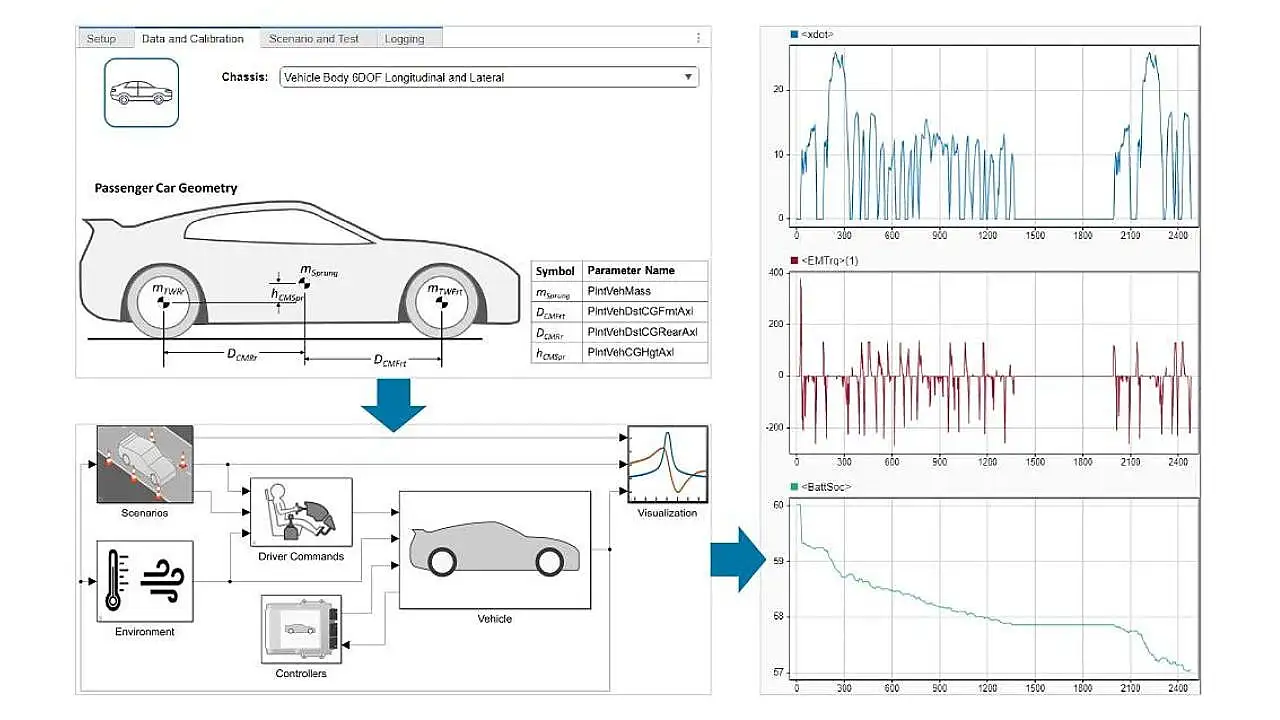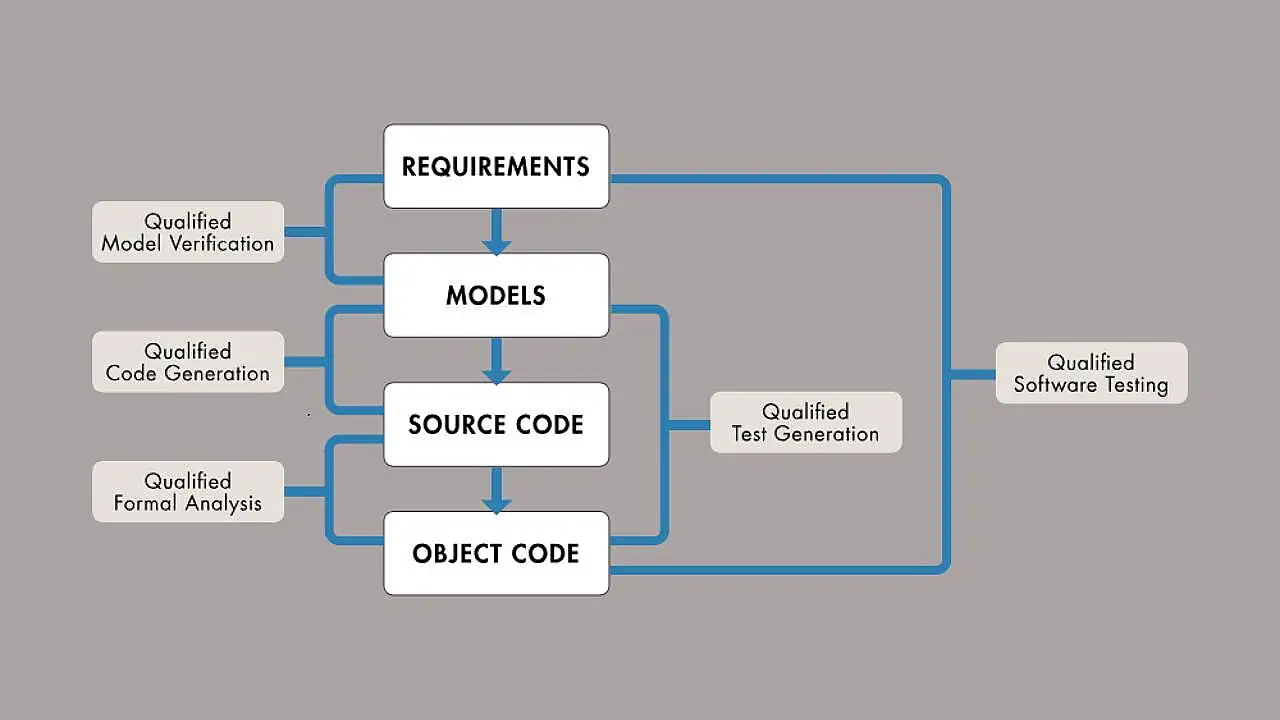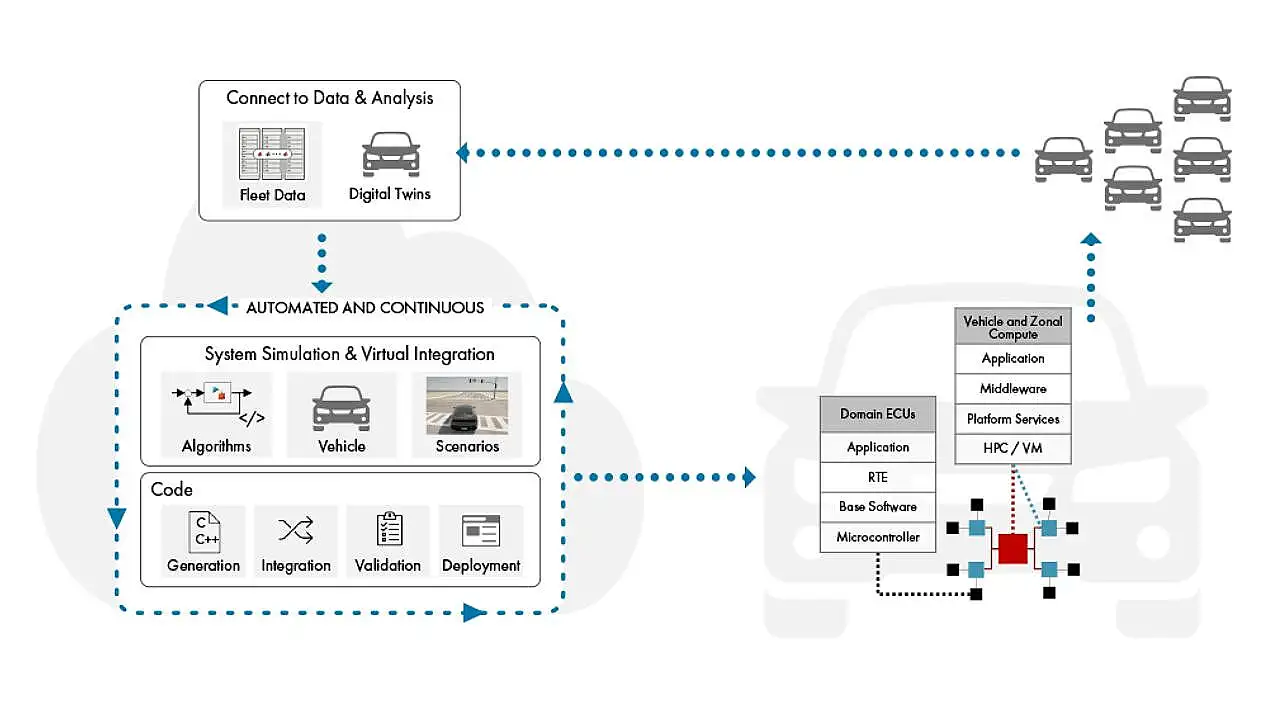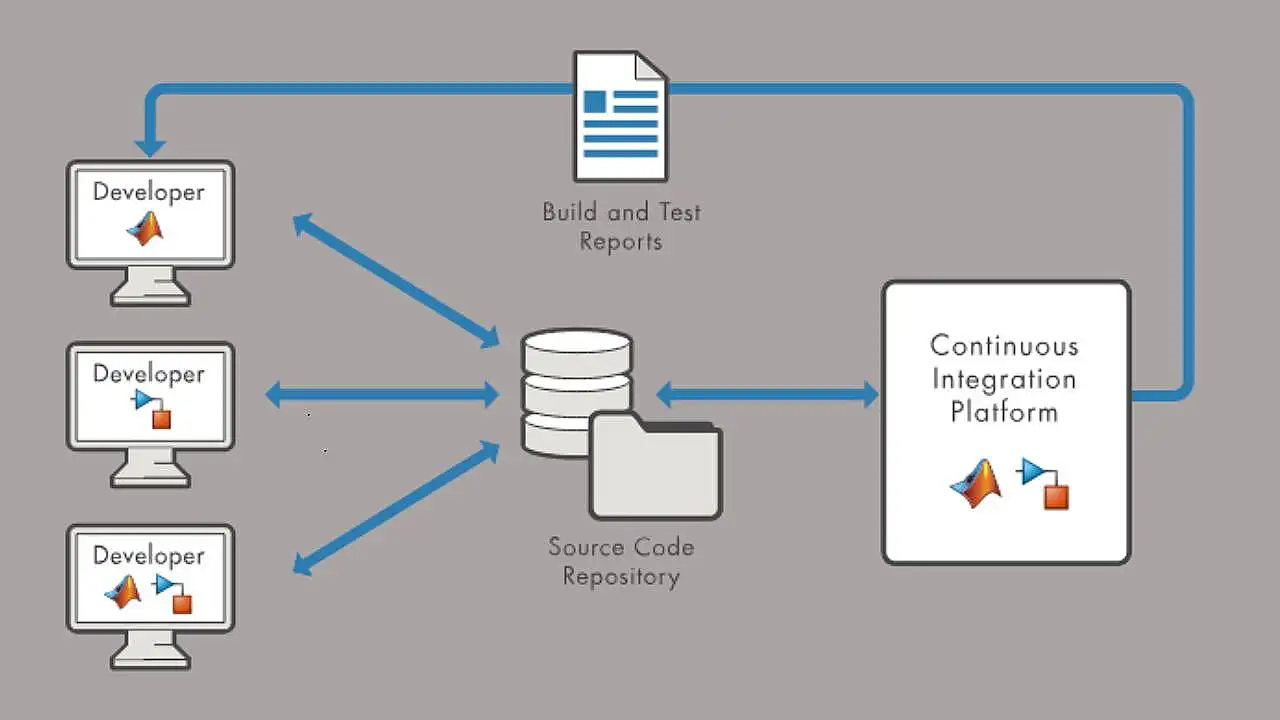
MathWorks, renowned for its pioneering contributions through MATLAB and Simulink, essential tools empowering engineers and scientists, is navigating the dynamic landscape of industry megatrends. In a strategic move, the company is intricately aligning its roadmap with the transformative currents sweeping through the technological realm. With a keen focus on the accelerated evolution of autonomous vehicles, electrification, and the burgeoning advancements in computing and AI, MathWorks is crafting a future-ready approach.
In the automotive sector, the transformative shifts toward Software-Defined Vehicles (SDVs), electrification, and autonomy are key factors influencing the company’s trajectory. Likewise, in other domains, the growing prominence of computing and AI is reshaping its strategies. To thrive as a company, agility and adaptability are paramount. Speaking to Mobility Outlook, Ramamurthy Mani, Engineering Director, Simulink Semantics, MathWorks, said, “Success hinges on our ability to swiftly adjust to the changing landscape, meeting the dynamic demands of our customers. AI, connectivity, autonomy—each of these elements plays a pivotal role in shaping how we provide cutting-edge tools that effectively address the diverse engineering challenges posed by the ever-evolving technological landscape,” he said.
On exploring the transferable insights from various industries, he highlighted the intriguing influence of aerospace and established software companies such as Google, Microsoft, and Amazon on the software-defined vehicle (SDV) development process. Unlike the past focus on delivering physical vehicles, the contemporary automotive industry prioritises software delivery, with the substantial cost of vehicle development, now predominantly in software. This shift prompts a re-evaluation of learning from software companies, particularly in adopting efficient processes for constant vehicle updates. Recognising the depreciation challenge, some industry players aim to emulate software companies by maintaining and increasing vehicle value through regular updates, drawing from the traditional practice of software updates every six months. These valuable lessons from software industries are increasingly shaping the landscape of the automotive sector, he said.

Large Language Modules (LLMs)
According to Mani, some of the LLMs showcase impressive performance even without specific custom training. Pre-trained models are adept at efficiently addressing fundamental computing tasks without the need for additional training. Instead of retraining these neural networks from scratch, the focus is on constructing smaller blocks that tailor existing services, creating a personalised layer for a unique user experience. The considerable expense associated with training afresh for each new user is a challenge, leading to a strategic approach of leveraging existing capabilities to their fullest extent.
LLM contribute to expediting development processes for scientists and engineers, as it possesses the potential to significantly accelerate development. “Our internal developers can even leverage it to expedite the coding process. This acceleration is immediate, and there are even more promising prospects on the horizon,” he mentioned.
On the system composing, he said, similar to utilising pre-existing code, “we work with atoms that our customers construct for specific tasks, and these can be composed into more extensive systems. This process can be approached mathematically, ensuring a structured and coherent methodology. System composing allows for a mathematically sound framework, ensuring that once constructed, the system can effectively perform specified functions. In essence, it offers a mathematical assessment of system quality, allowing us to provide precise measurements of effectiveness or deficiencies.”
Updatable Features
Regarding its 'updatable' feature, he said, modularity stands out as a fundamental concept. In the realm of smartphones, updating any app is a seamless process. In contrast, automotive software traditionally lacked this flexibility. Once manufactured, software updates were limited to critical issues, typically requiring intervention from the service centre. Newer companies sought a more dynamic approach, akin to updating apps on a phone. Hence, there is a need to write software in a way that aligns with this paradigm shift—more like writing for a phone than a traditional car. “This shift in software development is what we aim to facilitate with the tools provided by MathWorks. It is a very modular approach. You can plug in small pieces and remove them and put new ones in. It is like a Lego,” he added.
The company provides the tools that empower customers to create these modules. They bring their automotive expertise, and the company contributes its proficiency in software generation. “Think of it as a text analogy—while individuals write their documents, we function as the PowerPoint world, offering the comprehensive framework around it. In essence, we provide the infrastructure analogy in which customers can craft their modular software, enabling them to tell their best story,” he noted.
Commenting on the changing landscape of vehicle architecture, which is currently undergoing significant changes, Mani said as the trend leans toward consolidating numerous Electronic Control Units (ECUs) into more potent central computers, the challenge intensifies. Previously, software was tailored for specific boxes; now, the modules need to be adaptable across diverse computing resources within the vehicle. Unlike before, where software was optimised for a perfect box, the current demand is for software that swiftly transitions from one processing unit to another—a challenge that is emerging.

Secondly, there is the task of redeploying existing software onto newly developed hardware. The approach involves constructing it in two layers, a conversation often centred around middleware. The challenge lies in providing seamless middleware that facilitates the fluid movement of these notes across different hardware. “Our contribution involves streamlining this process —offering efficient, rapid deployment, minimising time to market, and ensuring updates that can be seamlessly integrated. This is the value we are poised to deliver in addressing the challenges that lie ahead,” he explained.
Low-code, No-code Scenario
It is challenging to assert with certainty that anyone claiming to have a definitive answer for low-code and no-code scenario, may find it elusive, Mani affirmed. The genesis of low-code and no-code concepts, particularly fueled by deep learning and machine learning, suggests a departure from traditional hand-coded software. The premise is that a neural network can execute tasks traditionally accomplished through meticulous software coding. It is akin to the paradigm of LLMs, where a neural network performs desired tasks with a certain level of autonomy.
However, this approach has its share of pros and cons. While it offers efficiency, the opacity of how certain tasks are executed can pose challenges, especially when troubleshooting failures. Many in the industry, particularly in safety-critical domains like automotive, lean toward traditional coding for the sake of clarity and predictability. The ongoing debate revolves around striking a balance and understanding how these trends will evolve.
At present, the landscape is in flux, and predicting the winner in the low-code versus traditional code battle remains uncertain. “Our objective in this space is to provide a relevant tool. We offer AI solutions accommodating both low-code and no-code options, enabling users to marry them seamlessly. As a software company, our stance is neutral - we do not pick sides but aim to facilitate a harmonious integration of these diverse approaches,” he said.

Cybersecurity
Mani views cybersecurity as a distinct and crucial domain. Given that these vehicles are essentially software-driven, akin to smartphones that can be vulnerable to hacking, ensuring the resilience of automotive systems is imperative. The need to fortify against potential cyber threats is an evolving competency across various companies. The company aims to be collaborative partners, leveraging its tools to assist customers in this journey.
Regardless of whether it involves traditional code, low-code, or no-code approaches, the testing, validation, and consideration of physics and actual electrical systems remain critical. “Our solutions are designed to ensure a consistent workflow, whether you are engaged in AI-based low code or any other development method. We aim to seamlessly support both approaches,” he said.
Challenges In Testing
Tier-1s and OEMs encounter formidable challenges in end-of-line testing especially in the realm of increasing electronics and software content. On supporting them mitigating these issues, Mani said, “Our primary focus is on conducting extensive testing before a vehicle reaches the manufacturing or end-of-line phase. Testing an autonomous vehicle involves examining the software, integrating different modules to assess their collective performance, and modelling scenarios. “Our solution, RoadRunner, allows customers to simulate how a car might navigate a physical road using virtual sensors in a 3D environment. This allows for thorough testing on desktops and pre-vehicle environments,” he said.
The objective is to address a significant portion of issues before they manifest in the actual vehicle, as the cost of testing on the vehicle and real hardware is notably high. This involves tying up physical resources, tracks, and technicians. Rooted in model-based design, the company emphasises mathematical and simulation-based testing upfront, aiming to reduce time and costs associated with on-vehicle testing.

Virtual Vehicle
The concept of a 'virtual vehicle' is gaining traction. It involves driving a computer-simulated vehicle for a specified number of miles - say, one million virtual vehicle miles. This approach allows for confronting a myriad of scenarios that one might encounter in real production. While aerospace companies have a history of employing simulation due to the high cost of their devices, the automotive industry, with its vast scale, presents unique challenges. Yet, the value lies in the comprehensive testing achieved through a million virtual vehicle miles, aligning with the rigorous standards set by industries like aerospace and defence.
Quantum Computing
While Mani agrees that quantum computing is undeniably cutting-edge, he opines that it remains an emergent technology yet, making it challenging to definitively gauge its current impact. As for its potential influence on day-to-day software development across its tools, the realm of mathematical problem-solving, particularly in addressing complex nonlinear problems, stands out as a promising area for quantum computing. The promise lies in the ability of quantum computing to solve such problems faster and more efficiently than traditional methods. However, “the current availability and scale of quantum computing are not yet at a stage where we can actively respond or adapt to it. While we stay informed about the technology, it is premature to predict its direct impact on us or our automotive customers,” he said.
Also Read:
“MathWorks’ Toolbox Range Enables Engineers Curtail Time To Market”